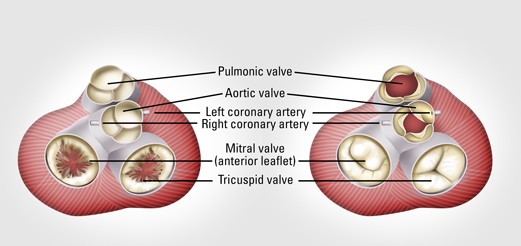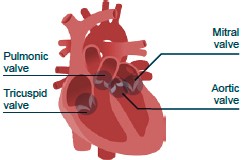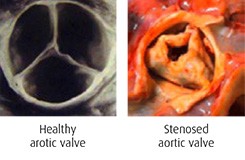Aortic Valve Stenosis
Dysfunction of the aortic valve with life-threatening consequences
The aortic valve controls the flow of oxygenated blood out of the left ventricle and is carried into the aorta. Aortic valve disease is defined as an inadequate closing or opening of the valve, resulting in its dysfunction.¹
Aortic valve stenosis is the process of thickening and stiffening in the valve, which can result in an abnormal narrowing of the aortic valve opening and reduction in blood flow. As a consequence, the heart needs to work harder to pump a sufficient amount of blood past the narrowed valve and throughout the body.²

- Principal symptoms associated with aortic stenosis include shortness of breath upon exertion (dyspnea), chest pain or tightness (angina), and dizziness/fainting episodes (syncope).4
- Left untreated, severe aortic stenosis can eventually lead to heart failure, severe infection and even sudden death.4 From the onset of aortic stenosis symptoms, the average survival rate is 50 percent at two years5 and 20 percent at five years.6
- In Europe and North America, aortic stenosis is considered the most common valvular lesion.7 It can be caused by a congenital abnormality or by infections such as rheumatic fever or endocarditis.8 The most common cause of aortic stenosis in Europe, however, is calcific degenerative disease, a build-up of calcium on the valve cusps that occurs with increasing age.9
Prevalence:10, 11
- 1.3% of people over 65
- 2.8% of people over 75
- 4% of people over 85
- Most prevalent native valve disease


















